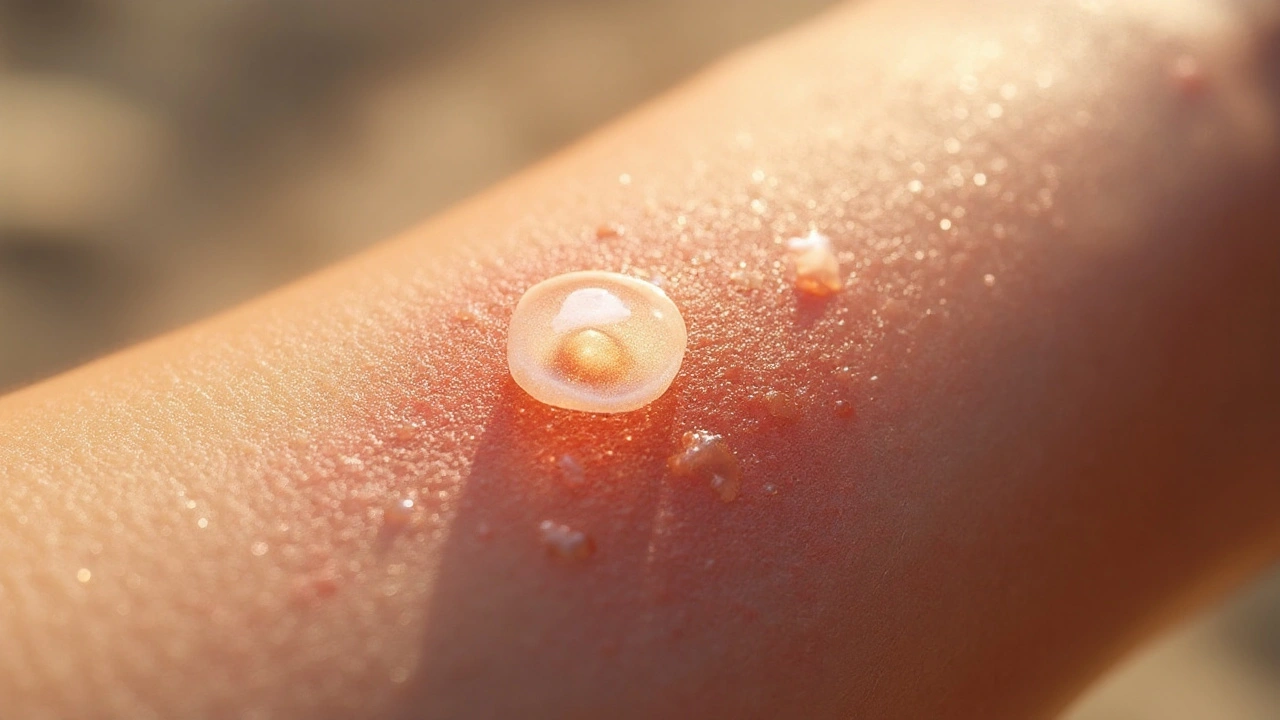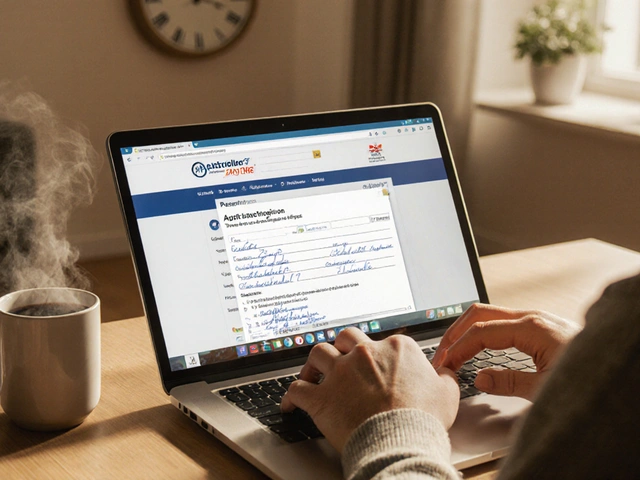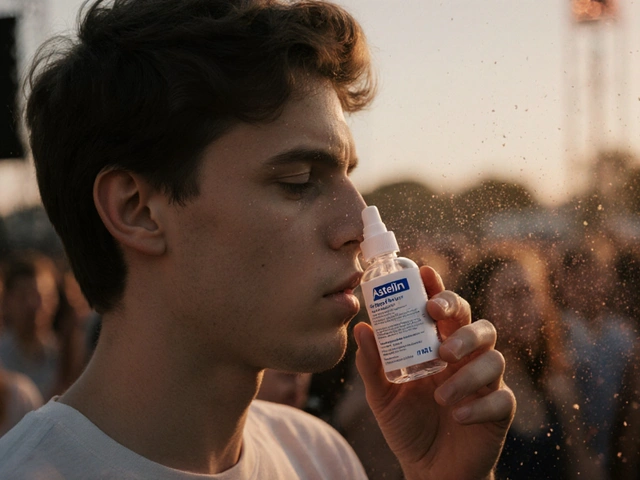 25
Sep,2025
25
Sep,2025
Sun protection is a set of practices that block or reduce exposure to ultraviolet (UV) radiation, crucial for preventing skin damage and disease flares. For anyone battling discoid lupus erythematosus (DLE) or systemic lupus erythematosus (SLE), the sun isn’t just a source of warmth - it can be a trigger that reignites painful lesions, fatigue, and organ involvement. This article breaks down why UV matters, which protective tools actually work, and how to weave them into daily life without feeling like you’re living under a permanent cloud.
Understanding Lupus and Photosensitivity
Discoid Lupus Erythematosus is a chronic skin‑limited form of lupus that causes red, disc‑shaped plaques often leaving scars. Systemic Lupus Erythematosus is a multi‑organ autoimmune disease that can affect kidneys, joints, brain, and skin. Both share a hallmark: photosensitivity. When UV photons hit the skin, they alter cellular DNA, generate free radicals, and expose hidden auto‑antigens that the immune system mistakenly attacks. In DLE, this shows up as a fresh rash; in SLE, it can spark a full‑body flare with joint pain, fever, and lab abnormalities.
How Ultraviolet Radiation Triggers Flares
Ultraviolet radiation (UVR) comprises UVA (320‑400nm) and UVB (280‑320nm) wavelengths. UVA penetrates deeper, aggravating collagen and triggering inflammatory pathways, while UVB is the main cause of sunburn and DNA damage. In lupus patients, even low‑level UVA can provoke skin lesions because their cutaneous immune cells are already on edge.
Research from the Australian Lupus Society (2023) shows a 45% increase in flare frequency during summer months, directly linked to higher ambient UV index scores. The mechanism is a cascade: UVR → keratinocyte apoptosis → release of nuclear antigens → auto‑antibody binding → complement activation → inflammation.
Core Sun Protection Strategies
Effective protection combines four layers: sunscreen, clothing, shade, and timing. Skipping any one reduces overall efficacy by roughly 20%.
- Sunscreen: Broad‑spectrum, SPF30or higher, reapplied every two hours.
- Protective clothing: Long‑sleeve shirts, leggings, and wide‑brim hats made of tightly woven fabrics (thread count≥200).
- Shade: Seek natural or artificial cover between 10a.m. and 4p.m., when UV index peaks.
- Timing: Limit direct sun exposure to short bursts (5‑10minutes) if vitamin D levels need a boost.
Each layer works independently but together they form a “photoprotective shield” that keeps UVR from reaching vulnerable skin cells.
Choosing the Right Sunscreen
Not all sunscreens are created equal. Two key dimensions matter: SPF rating and active ingredient type.
| Feature | SPF30 Mineral | SPF50 Chemical |
|---|---|---|
| UVA/UVB Coverage | Broad‑spectrum (UVA‑PF~15) | Broad‑spectrum (UVA‑PF~25) |
| Active Ingredients | Zinc oxide, titanium dioxide | Avobenzone, octocrylene, oxybenzone |
| Water Resistance | 80minutes | 40minutes |
| Potential Irritants | Low (ideal for sensitive skin) | Higher (may trigger dermatitis) |
| Environmental Impact | Coral‑safe | Possible reef harm |
For lupus patients, mineral (zinc oxide or titanium dioxide) formulas are generally preferred because they sit on top of the skin rather than absorbing UV, reducing the chance of systemic absorption and irritation.

Balancing Vitamin D While Practicing Sun Safety
Vitamin D deficiency is common in lupus due to chronic sun avoidance and steroid use. A 2022 cohort from Melbourne reported that 68% of SLE patients had serum 25(OH)D levels <30ng/mL.
Strategies to maintain adequate vitamin D without compromising skin protection:
- Dietary sources: Fatty fish (salmon, mackerel), fortified dairy, egg yolks.
- Supplementation: 800-1000IU daily is safe for most adults; monitor blood levels every 3months.
- Timed sun exposure: 10-15minutes on a small, protected area (e.g., forearm) 2-3 times weekly during low‑UV periods (early morning or late afternoon).
Always discuss supplementation with a rheumatologist or dermatologist to avoid interactions with hydroxychloroquine or steroids.
Practical Tips for Everyday Life
Putting theory into practice can feel overwhelming. Below are real‑world hacks that have helped Melbourne‑based lupus support groups:
- Keep a travel‑size mineral sunscreen in every bag, pocket, and car console. Missing a dose is less likely when it’s literally at hand.
- Invest in UPF‑50+ clothing. Brands now sell stylish, breathable tees that double as photoprotective gear.
- Use smartphone UV‑index widgets to plan outdoor activities. If the index reads >6, schedule indoor workouts.
- Apply sunscreen 15minutes before stepping outside; reapply after swimming, sweating, or towel‑drying.
- Carry a portable shade umbrella for unexpected outdoor errands.
These habits create a routine that feels less like a restriction and more like a personal safety protocol.
Monitoring and Adjusting Your Photoprotection Plan
Every lupus journey is unique. Regular check‑ins with your healthcare team keep the plan dynamic.
- Quarterly skin exams: Detect early lesions before they spread.
- Monthly flare diary: Note sun exposure, sunscreen use, and symptom changes. Patterns often reveal hidden triggers.
- Laboratory reviews: Track auto‑antibody titres and vitamin D levels to gauge systemic impact.
If you notice a flare despite strict sun protection, consider adjusting the SPF, switching to a pure mineral formula, or increasing shade usage during peak hours.
Frequently Asked Questions
Can I skip sunscreen on cloudy days?
Yes, UV rays penetrate clouds up to 80%. For lupus patients, it’s safer to apply sunscreen even when the sky looks overcast.
Is chemical sunscreen harmful for lupus?
Chemical filters can occasionally irritate sensitive skin and may be absorbed systemically. Many clinicians advise mineral sunscreens as the first choice for DLE and SLE.
How often should I reapply sunscreen?
Every two hours, or immediately after swimming, sweating, or towel‑drying. For chronic lupus management, keeping a consistent reapplication schedule is key.
Do I need a higher SPF if I have darker skin?
All skin tones can suffer UV damage. While darker skin has more natural melanin protection, lupus‑related photosensitivity overrides that advantage; SPF30or higher is still recommended.
Can wearing a hat replace sunscreen?
A wide‑brim hat protects the face, neck, and ears but leaves the forearms, shoulders, and scalp exposed. Combine hats with sunscreen for full coverage.
What is the safest time of day for outdoor exercise?
Early morning before 10a.m. or late afternoon after 4p.m. when the UV index drops below 4. Pair this with sunscreen and a breathable UPF shirt.






Sun protection isn’t a choice, it’s a survival skill for lupus patients.
Wow, another article telling us to wear hats and slather on mineral sunscreen-because that’s never felt like a burden before.
Sure, you can just grab a SPF30 bottle and become invincible, as if lupus flipped a switch and gave you superhero skin.
Meanwhile, the UV index still smiles at us, indifferent to your meticulous reapplication schedule.
And let’s not forget the joyous ritual of checking the “UVA‑PF” numbers like you’re reading a stock ticker.
If you’re lucky, you’ll survive the summer without a flare, which apparently is a miracle worthy of a standing ovation.
In reality, the best defense is a relentless routine that feels more like a chore than a lifestyle.
But hey, at least you’ll look like you’re ready for a beach photoshoot while your immune system screams in the background.
Bottom line: sunscreen and shade are non‑negotiable, even if it feels like the universe is testing your patience.
One might argue that the sun is an indifferent force, yet for those living with lupus it becomes a catalyst for chaos.
Consider the photons as messengers that betray the skin’s delicate balance, whispering hidden antigens to an already vigilant immune system.
This betrayal is not merely a biological event; it is a philosophical reminder of how external realities infiltrate the interior self.
When ultraviolet rays breach the epidermal barrier, they instigate keratinocyte apoptosis, a cascade that mirrors the inevitable decay within any living organism.
The ensuing release of nuclear debris is akin to a secret exposed, compelling antibodies to act as misguided judges.
Such a process reflects the paradox of protection: we shield our bodies with clothing, yet the very act of shielding can feel like imprisonment.
Adopting mineral sunscreen, with zinc oxide forming a reflective shield, respects the skin’s autonomy by refusing to be absorbed.
It is a pragmatic compromise between embracing nature’s light and guarding against its excesses.
Furthermore, the timing of exposure-early morning or late afternoon-serves as a temporal discipline, reminding us that not all moments are equal in their impact.
By limiting direct sun to five to ten minutes, we honor the body’s need for vitamin D while acknowledging the perils of overexposure.
Recording a flare diary becomes a reflective practice, turning anecdotal pain into data worthy of scientific scrutiny.
Quarterly skin examinations become a ritual of self‑inspection, akin to a philosopher’s daily meditation on the impermanence of form.
The collective weight of these strategies constructs a photoprotective shield, not merely of substances, but of intent.
Intent, after all, is the most resilient armor against the arbitrary whims of ultraviolet radiation.
Therefore, when a cloud obscures the sky, we must remember that UV penetrates even the densest mist, and the discipline must persist.
In the end, the pursuit of sun safety is a continuous negotiation between vulnerability and agency, a dialogue that defines the lived experience of lupus.
From a practical standpoint, layering protection works better than relying on a single method.
A wide‑brim hat keeps the face and neck out of direct rays, while UPF shirts guard the arms and shoulders.
Reapplying sunscreen every two hours might sound tedious, but it’s the difference between a mild rash and a full‑blown flare.
Don’t forget that even indoor lighting can emit low‑level UV, so a quick sunscreen swipe before work isn’t overkill.
Making these habits routine turns them into second nature rather than a burdensome checklist.
The hat alone won’t save you if you skip the sunscreen on the forearms.
Great deep dive but remember practical tip the mineral sunscreen should be at least SPF30 and reapplied after swimming it’s easy to forget and that’s where most flares start
Totally agree with the layering idea 😊 especially the UPF shirts-they’re like armor for anyone with lupus.
Forearm UV exposure constitutes a non‑negligible dosimetric factor; neglecting it compromises the overall photoprotective index.
Oh sure, because we all have a mini‑pharmacy of mineral SPF30 in our backpacks ready for that spontaneous swim.
While the notion of carrying a sunscreen vial might appear whimsical, in practice it reflects a commendable commitment to proactive disease management-so kudos for the mental image.